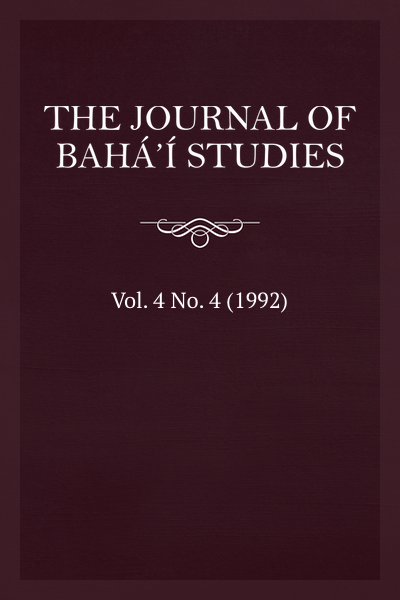Abstract
A study of passages from the Bahá’í writings indicates that art can render services of a mystical, moral, and social nature. Such services taken together constitute the spiritual role of art, whose highest purpose is to ennoble the individual soul and the collective life of humanity. When playing such a role, art draws its inspiration from the vision of life unfolded in divine Revelation, harmonizes with the fundamental teachings of the world’s major religions, and seeks to reinforce their original objective, which is to foster spiritual growth and social harmony. In realizing a spiritual role, art employs beauty, whose purpose both in the world of creation and in the realm of human creativity is to attract the soul toward its Creator and to draw it into a spiral or spiritual growth. Art also employs emotion, which can reinforce the various facets of the service art renders.
This article is a modified version of one of twelve chapters in a book by the same author. The book, entitled Mirror of the Divine: Art in the Bahá’í World Community, is to be published by George Ronald.

This work is licensed under a Creative Commons Attribution-NonCommercial-NoDerivatives 4.0 International License. If you wish to adapt, remix, transform, or build upon this work in any way, you may not distribute your work without first contacting the Editor for permission.
Copyright © 1992 Ludwig Tuman





